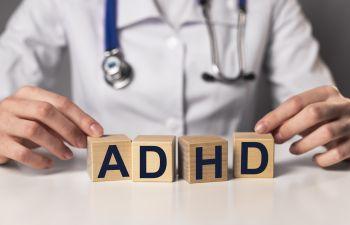Introduction
Attention-Deficit/Hyperactivity Disorder (ADHD) is a prevalent condition in children, characterized by symptoms of inattention, hyperactivity, and impulsivity. Medications are often prescribed to help manage these symptoms and improve functioning at school and at home. While ADHD medications can be effective, they also come with potential risks and side effects. Understanding the benefits and risks associated with these medications is crucial for making informed decisions about a child’s treatment.
Types of ADHD Medications
ADHD medications fall into two main categories: stimulants and non-stimulants. Each type works differently to address the symptoms of ADHD.
Stimulant Medications:
These are the most commonly prescribed ADHD medication for kids the pros and cons include drugs like methylphenidate (e.g., Ritalin, Concerta) and amphetamine-based medications (e.g., Adderall, Vyvanse). Stimulants work by increasing the levels of certain neurotransmitters in the brain, which helps improve attention and control impulsivity and hyperactivity.
Non-Stimulant Medications:
These are prescribed when stimulants are not effective, cause significant side effects, or are contraindicated. Non-stimulants include atomoxetine (Strattera), guanfacine (Intuniv), and clonidine (Kapvay). They work through different mechanisms and are generally considered when stimulants are not suitable.
Benefits of ADHD Medications
ADHD medications can offer substantial benefits for children struggling with ADHD. The key advantages include:
Improved Focus and Attention:
Stimulant medications can help increase a child’s ability to focus on tasks, follow instructions, and complete assignments. This improvement in attention can enhance academic performance and reduce behavioral issues.
Reduction in Hyperactivity and Impulsivity:
Medications can help manage symptoms of hyperactivity and impulsivity, allowing children to participate more effectively in classroom activities and social interactions.
Enhanced Quality of Life:
Effective medication management can lead to better relationships with peers and family, improved self-esteem, and a more organized and productive daily life.
Evidence-Based Effectiveness:
Stimulant medications have a strong track record of efficacy, with numerous studies supporting their role in improving ADHD symptoms and overall functioning in children.
Risks and Side Effects
While ADHD medications can be beneficial, they also come with potential risks and side effects. It is important for parents and healthcare providers to weigh these risks against the potential benefits.
Common Side Effects:
Stimulant medications can cause side effects such as decreased appetite, difficulty sleeping, stomachaches, and headaches. These side effects are often temporary and may diminish over time or with dosage adjustments.
Growth Concerns:
Some studies suggest that long-term use of stimulant medications may impact growth in children. While the evidence is not conclusive, regular monitoring of height and weight is recommended.
Cardiovascular Effects:
Stimulants can increase heart rate and blood pressure. Although these effects are generally mild, children with pre-existing heart conditions should be closely monitored.
Emotional and Behavioral Changes:
In some cases, stimulants can lead to increased anxiety, irritability, or mood swings. It is important to monitor these changes and discuss any concerns with a healthcare provider.
Potential for Abuse:
Stimulants have a potential for abuse, especially if not used as prescribed. It is crucial to use these medications under the supervision of a healthcare provider and to follow prescription guidelines carefully.
Choosing the Right Medication
Selecting the appropriate medication for a child with ADHD involves careful consideration of various factors:
Individual Response:
Children may respond differently to different medications. It may take some time to find the right medication and dosage that effectively manages symptoms with minimal side effects.
Type of ADHD Symptoms:
The choice of medication may depend on the specific symptoms a child is experiencing. For instance, stimulant medications are often preferred for managing core symptoms, while non-stimulants may be considered if stimulants are not suitable.
Health History and Comorbid Conditions:
A child’s overall health, including any co-existing conditions (e.g., anxiety, depression), should be considered when choosing a medication. Some medications may interact with other treatments or exacerbate certain conditions.
Monitoring and Follow-Up
Once a medication is prescribed, ongoing monitoring and follow-up are essential to ensure its effectiveness and safety:
Regular Check-Ups:
Schedule regular appointments with the healthcare provider to monitor the child’s response to the medication, adjust dosages if necessary, and address any side effects.
Communication with School:
Maintain open communication with teachers and school staff to monitor how the medication is impacting the child’s performance and behavior in the classroom.
Adjusting the Treatment Plan:
If side effects are significant or if the medication is not providing the desired benefits, the healthcare provider may adjust the dosage, switch medications, or explore alternative treatment options.
Conclusion
ADHD medications can play a vital role in managing the symptoms of ADHD in children, improving their focus, behavior, and overall quality of life. However, it is important to carefully consider the benefits and risks associated with these medications. By working closely with healthcare providers, monitoring the child’s response to treatment, and making informed decisions, parents can help ensure that their child receives the most effective and appropriate care. Ultimately, the goal is to find a treatment approach that supports the child’s well-being and helps them thrive both academically and socially.




